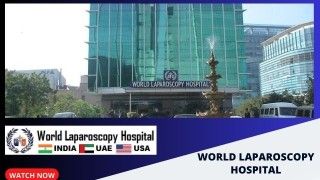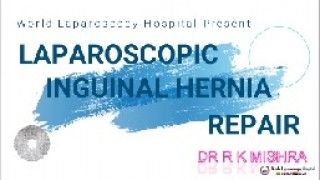Laparoscopic Management of Chronic Etopic Pregnancy
Add to
Share
180 views
Report
1 month ago
Description
Chronic ectopic pregnancy is a rare but potentially serious condition where the embryo implants outside the uterine cavity, usually in the fallopian tube, and persists in a low-grade, slowly progressive form. Unlike acute ectopic pregnancy, which often presents with sudden abdominal pain and hemodynamic instability, chronic ectopic pregnancy can manifest subtly with prolonged pelvic pain, irregular bleeding, or a pelvic mass. Early diagnosis and proper management are crucial to prevent severe complications such as tubal rupture, hemoperitoneum, or infertility. Role of Laparoscopy: Laparoscopy has become the gold standard for both diagnosis and management of ectopic pregnancies, including chronic cases. Its minimally invasive nature offers several advantages over traditional open surgery: Precise Visualization: High-definition laparoscopic cameras allow clear identification of the ectopic mass, adhesions, and surrounding structures. Minimal Trauma: Smaller incisions reduce postoperative pain, scarring, and recovery time. Fertility Preservation: Laparoscopy enables tubal-sparing procedures when feasible. Shorter Hospital Stay: Most patients can be discharged within 24–48 hours. Preoperative Assessment: Before laparoscopic intervention, careful evaluation is necessary: Clinical History & Symptoms: Chronic pelvic pain, intermittent vaginal bleeding, or history of infertility. Ultrasound Imaging: Transvaginal ultrasound may show a heterogeneous adnexal mass, fluid collection, or complex cystic structures suggestive of chronic ectopic pregnancy. Serum β-hCG Levels: Typically lower than acute ectopic cases but may show a plateau or slow rise. Assessment of Hemodynamic Stability: Laparoscopy is preferred if the patient is stable; unstable patients may require immediate laparotomy. Surgical Technique: Anesthesia and Positioning: General anesthesia; patient in Trendelenburg position. Port Placement: Usually a 10 mm umbilical port for the camera, and two 5 mm ports in the lower quadrants for instruments. Exploration: Systematic inspection of the uterus, adnexa, and pelvis to locate the ectopic mass. Management of Adhesions: Chronic ectopic pregnancies often lead to dense adhesions; careful dissection is performed to avoid injury to bowel or bladder. Removal of Ectopic Tissue: Salpingostomy: Opening the fallopian tube to remove the ectopic tissue while preserving the tube. Salpingectomy: Complete removal of the affected fallopian tube if it is severely damaged. Hemostasis: Meticulous coagulation to prevent postoperative bleeding. Specimen Retrieval: Using an endoscopic bag to avoid contamination. Closure: Ports closed with sutures or skin adhesive. Postoperative Care: Monitoring vital signs and urine output. Pain management and early ambulation. Follow-up β-hCG levels to ensure complete removal of trophoblastic tissue. Counseling regarding future fertility and early pregnancy monitoring. Advantages of Laparoscopic Approach: Less postoperative pain and faster recovery. Reduced adhesion formation, preserving fertility. Better cosmetic outcome. Shorter hospital stay and lower risk of infection. Conclusion: Laparoscopic management of chronic ectopic pregnancy is a safe, effective, and fertility-preserving option when performed by experienced surgeons. Early diagnosis, meticulous surgical technique, and appropriate postoperative care are essential to minimize complications and optimize reproductive outcomes.
Similar Videos






